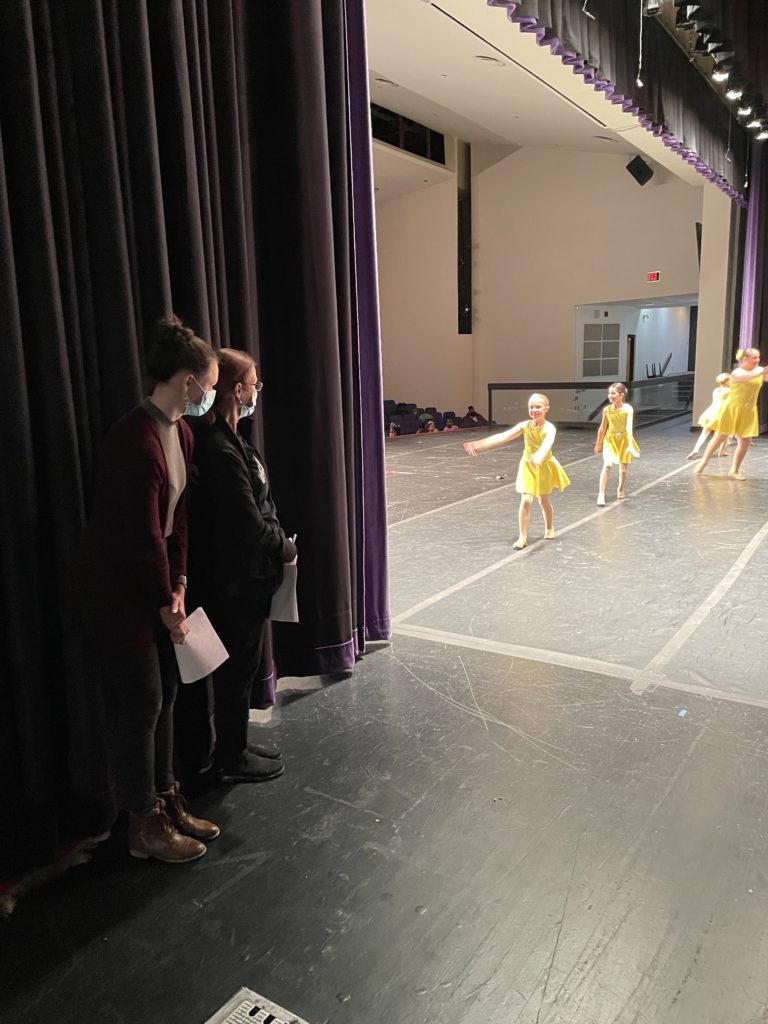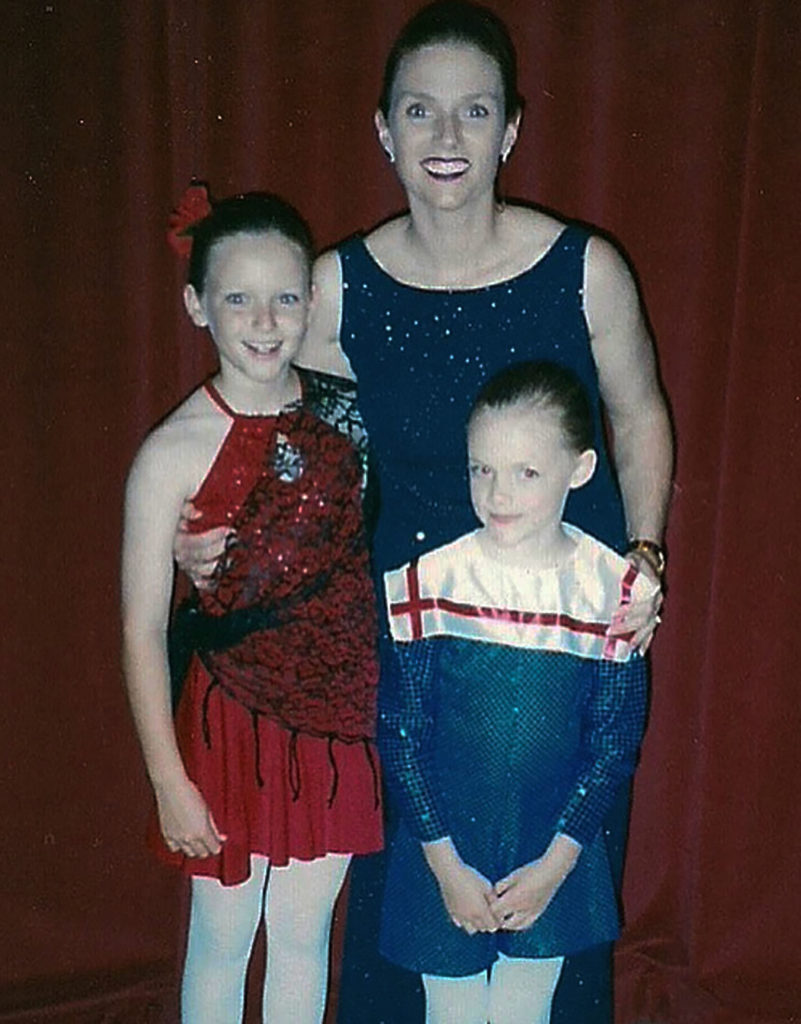
Teaching and parenting, while incredibly rewarding, are difficult enough on their own. But when combined, they could present a new set of challenges and responsibilities that could affect the dynamics of your classroom and home life.
As a young girl, I would often beg my mother to play “anything but classical music” as we drove from our house to our dance studio, which she had owned and taught at since before I was born. Occasionally my pleadings would find success and result in our ballet class getting to listen to pop music. And although my classmates knew I was the dance teacher’s daughter, they were unaware that the music change was my doing, as I knew not to show off my special relationship with the teacher. It was a small victory in the life of a dance teacher’s daughter and a small appeasement in my mother’s trials of being the dance teacher and my mom.
So how do you achieve being an effective teacher while teaching your own child? With the guidance of dance teachers who have done it, there are ways you can make teaching your child not only manageable but enjoyable. Here are some strategies.
Don’t Draw Attention to Your Relationship
The mother–child relationship is most successful in the studio when teachers communicate the expectations beforehand. Second-generation dance teacher Angie Sellers (whose mother, Patricia Oplotnik, was an Artist in Residence at Oklahoma City University for 17 years and owned a studio over 30 years) teaches her youngest daughter at Ambition Dance Productions. Sellers would remind her daughters that whenever they walked into the studio, she wasn’t just their mom but also their teacher. Her youngest daughter would even call her “Miss Mommy.”

My own mom, Mary Lorraine Miller, who owns Mary Lorraine’s Dance Center, would remind my sister and me that being her daughters didn’t mean we were exempt from the rules. On the contrary, she would tell us, we had to be good role models: have our hair done, be in correct attire and know the choreography.
It’s important to let your child know that they are responsible for their own behavior and that it’s not their place to reprimand other students who don’t follow the rules.
Correct Your Child With Sensitivity and Positivity
Giving your own child corrections in class can make them feel like they are being picked on, as there may be feelings of defensiveness. This is especially true for teens, who are finding their own identity through the challenges of adolescence. At home, teens and parents may be bickering daily. This animosity can seep into the dance studio and make a simple correction feel like a personal attack. My own mom knows this all too well. “In the teenage years they [my children] were a bit snippier with me than some of my other students,” she says.
In those challenging times, my mom developed helpful practices. First, she only corrected my dancing when we were at the studio. On the flip side, she never brought issues from home into the studio. When I was upset about feeling picked on in class, we discussed it privately. She would listen and reassure me that her corrections were not intended to negatively single me out, but rather to help me improve. Now, as an adult, I know my mom purely saw the potential in me that I couldn’t see.

Sellers reminds teachers to give their own children positive feedback, as well. “When it’s your child, it’s a lot easier to give them nonstop corrections. However, it’s important to remember to give them a ‘Great job, you fixed that’ praise back to them.” Personally, I longed for my mom’s approval of my dance abilities.
Third generation studio owner, Jenny Campbell, who owns Jenny’s Dance Centre took on a slightly different approach when it came to providing feedback. She believed that having her daughters take classes from other teachers in the studio would only strengthen their training. “If I felt my teenage daughters weren’t going to take the correction positively, I would let one of my other teachers know (without my daughters’ knowledge), and they would deliver the correction.” Sellers explains that in an attempt to avoid favoritism from the other teachers, she reminds her daughters “not to dance for their praise but to dance for themselves.”
Be Proactive in Tackling Favoritism
It’s important to be cognizant of the fact that constant corrections of your own child might be perceived as favoritism by other students. Try to maintain a balance by giving every student positive feedback and constructive criticism. When you feel that you are spending too much time correcting your own child, address the class as a whole rather than singling out your child.
When it comes to recitals and competitions, this feeling might be especially prominent. To avoid the “She just got that part because she’s her daughter” accusation when choreographing, Sellers recommends openly addressing this topic from the start. “Instead of making it (the assumption of favoritism) taboo, I talk about it.” Sellers constantly reminds her students that no matter what part you get or where you stand, everyone is seen equally onstage.
It’s also beneficial to remind the class that every student has different strengths, and share your reasoning for onstage placement. Sometimes, teachers might choose to spotlight a student’s ability at various parts of the choreography. And in some instances, this might end up being your own child. Sellers, for instance, gave one of her daughters a small acting part in a musical theater dance because she knew at that moment she was right for the role. She communicated to the class her reasoning for the selection, and everyone agreed that her daughter was the best choice for that part.
Find Other Ways to Support Your Child in Performance Settings
Most parents get their child ready for a performance, then sit back in the audience and enjoy the show. But that’s not always the case when you’re a dance parent-teacher.
My mom always planned ahead and helped me prepare everything before arriving at the theater. Once we got there, her attention was no longer solely on me. As I got older, she taught me to be self-sufficient by letting me do my own hair and makeup, and making me responsible for my own costumes and dance shoes.

At dance competitions, Campbell choose to watch her children performing from the audience, rather than backstage. “I didn’t want to watch them as their teacher. I wanted to watch my girls as their mom. I was so proud of them and that was the one moment where I didn’t work, and I really cherished that.” Campbell’s daughter Jillian adds, “No matter how the performance went, my mom was always so supportive. She would say ‘You were so beautiful’ and ‘Good job.’ She’d turn off the dance teacher mode and switch on the mom mode for us.”
For Sellers, being involved in dance both professionally and in competitions has given her a broader perspective on dance education, a perspective that is not limited to winning awards or titles. “I remind my daughters that it’s not about taking home the first-place trophy, but rather focusing on learning and improving.”
Cherish the Rewards
My mom always says that although dance often consumed our lives, it was worth it for the special bond we shared. “We lived the business. Costume catalogs on the kitchen table, music playing late at night while I choreographed,” she says. And for me, being the dance teacher’s daughter is the only life I know. But it is a life I love. My mom was away from home in the evenings teaching, so being in class with her was a chance to be together. And despite the high expectations and corrections in class, she is an incredible and effective teacher, who I love learning from.

Sellers found that sharing the joy of dance has provided her and her daughters with the ability to communicate and relate to each other better. She also sees it come full circle as she observes her daughters being leaders and encouraging their peers. Having danced under her own mother, Sellers is confident her daughters will look back on it fondly just as she does.
“In hindsight I wouldn’t have it any other way,” Sellers says. “My mom was just helping me to be the best I could be.”
“The most rewarding part is to see your child’s success as a dancer—both as an amateur and as a pro,” Campbell adds. “It’s so fulfilling to see the ups and downs and still see them persevere.” Teaching your own child is unlike teaching any other student. But it could be the most rewarding teaching experience you’ll ever have.





